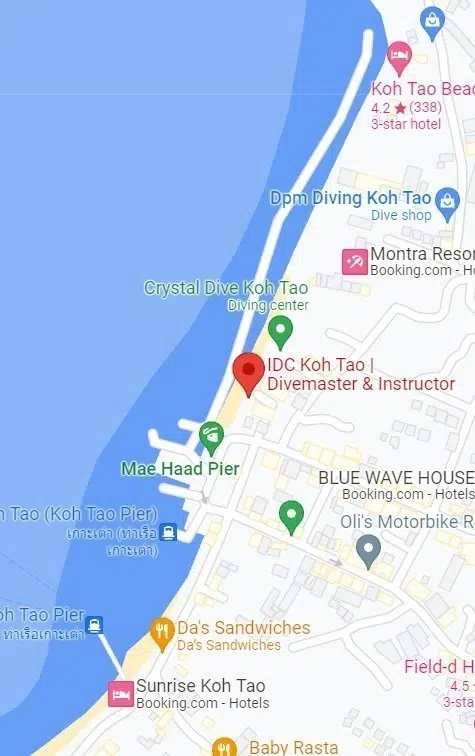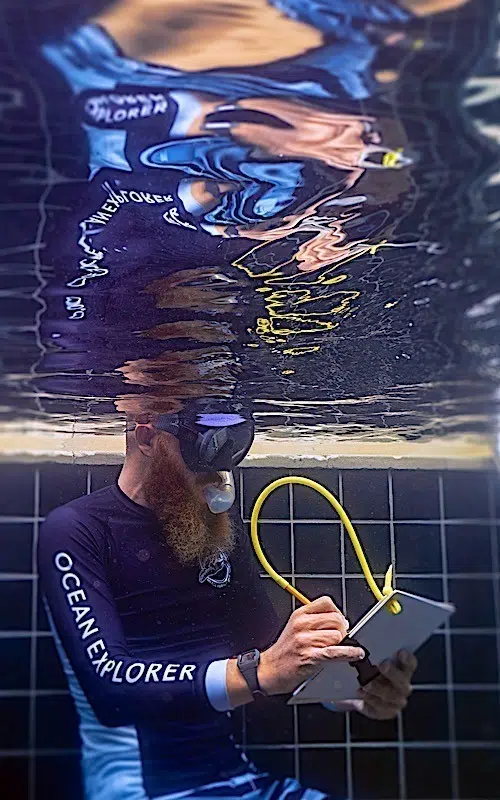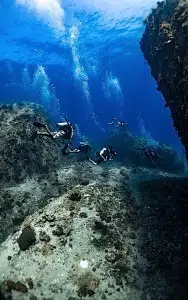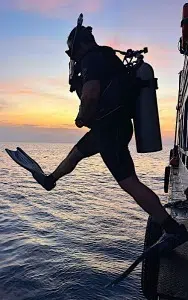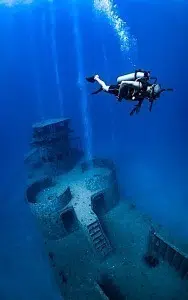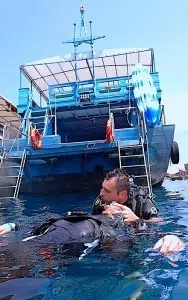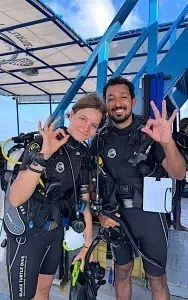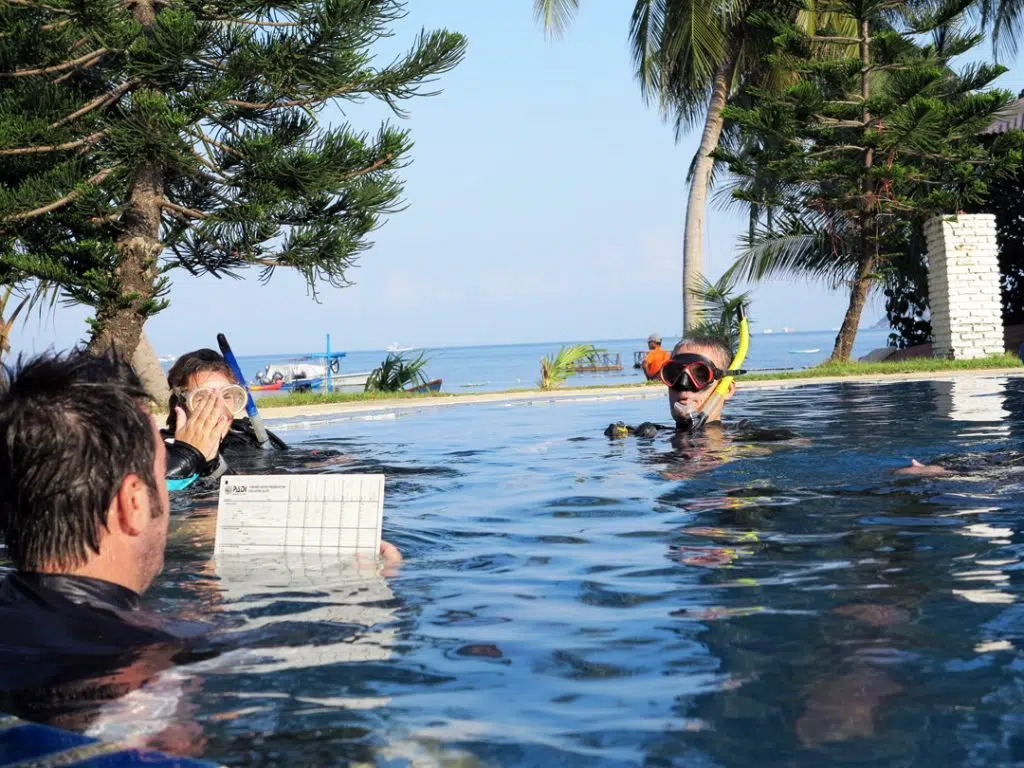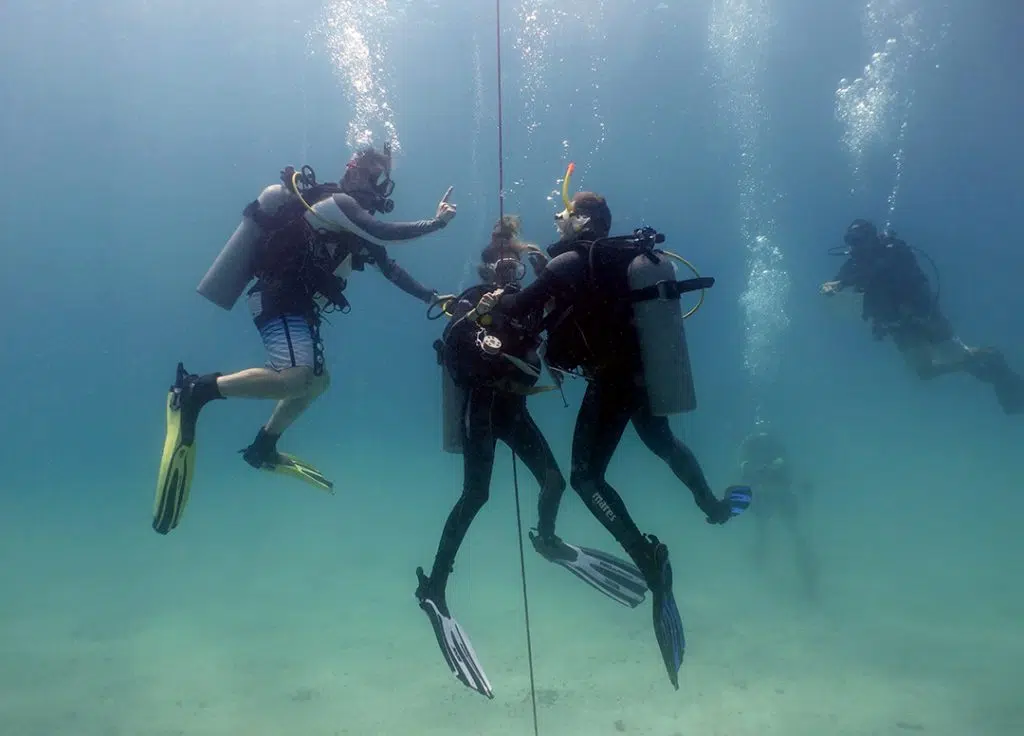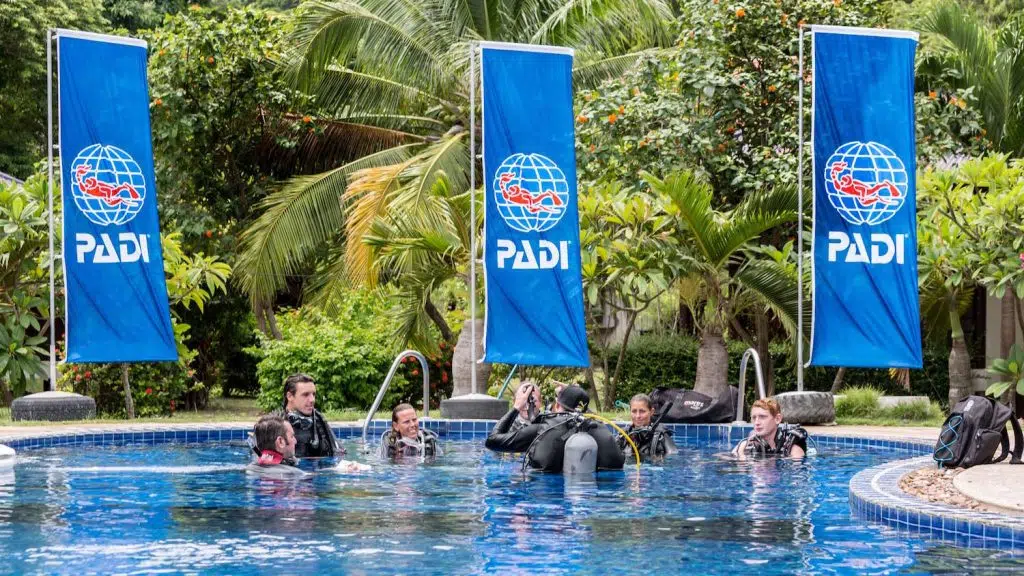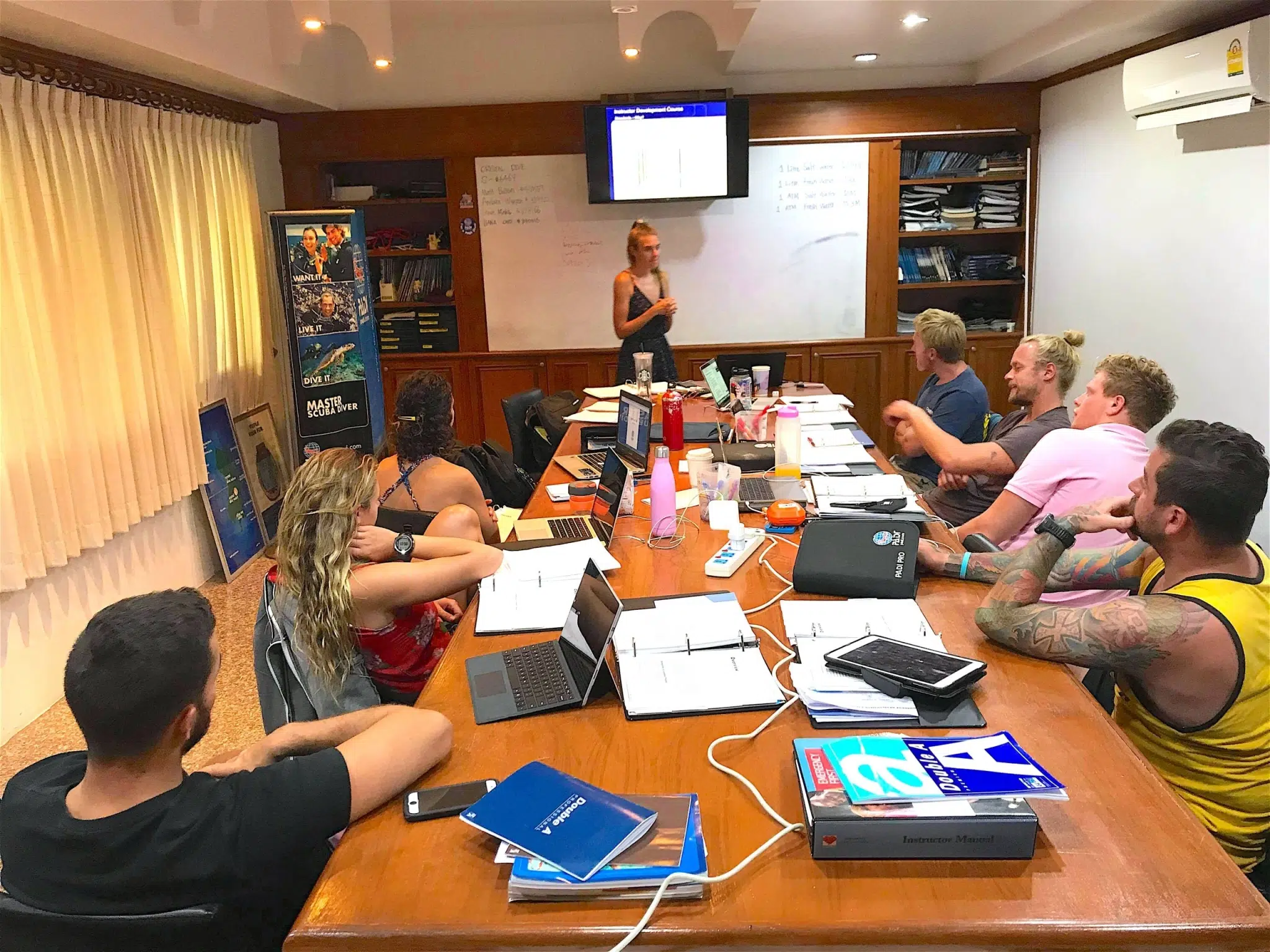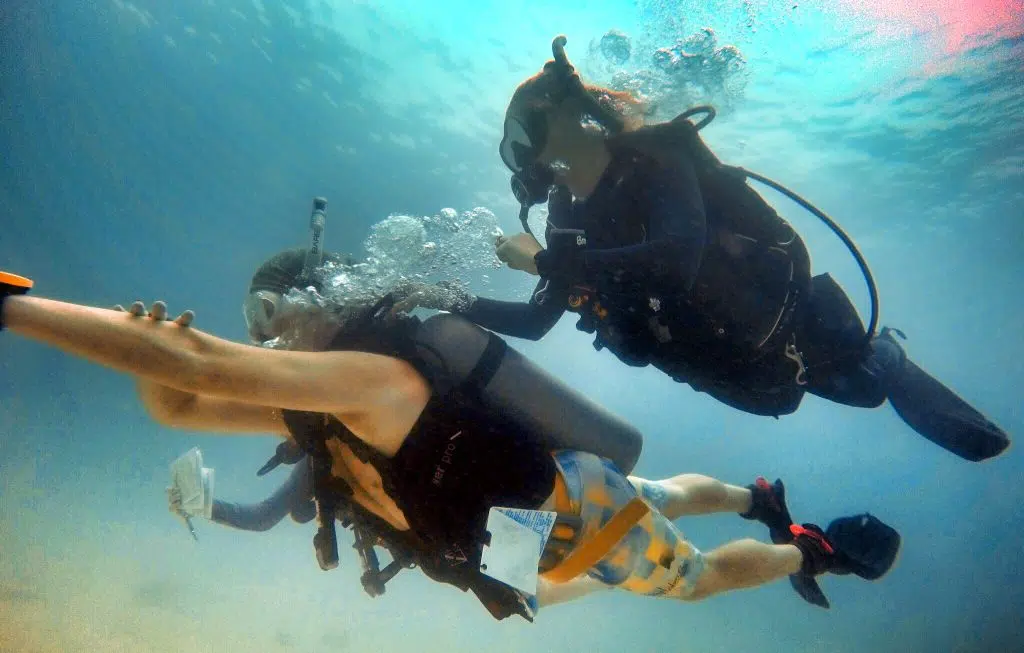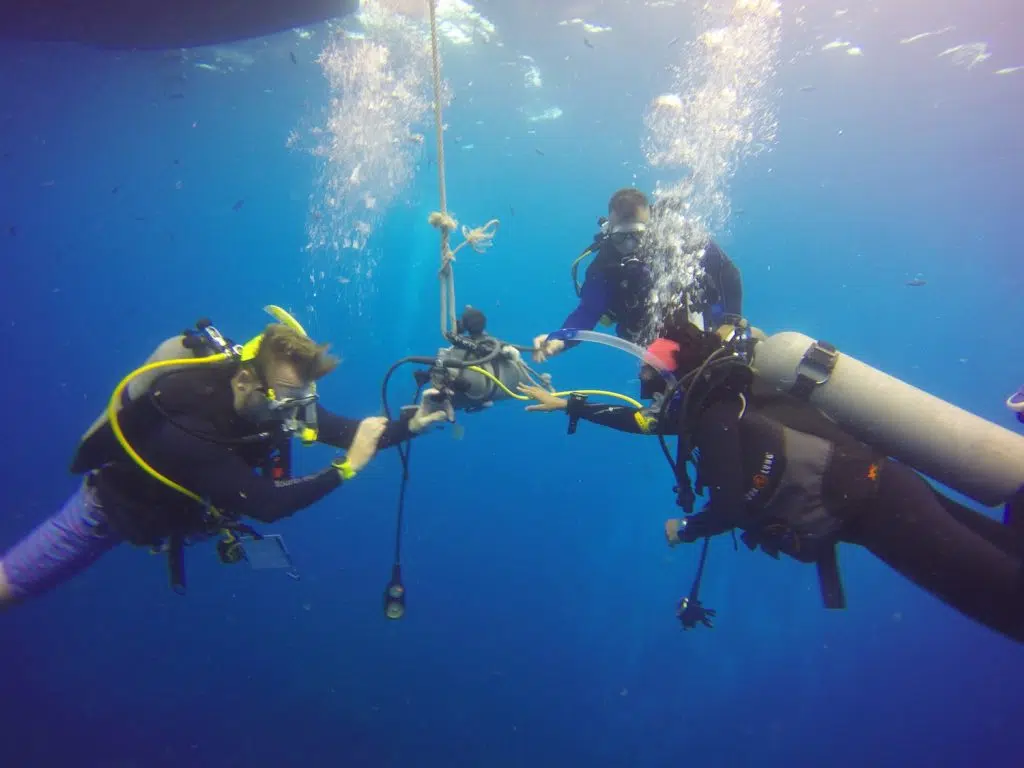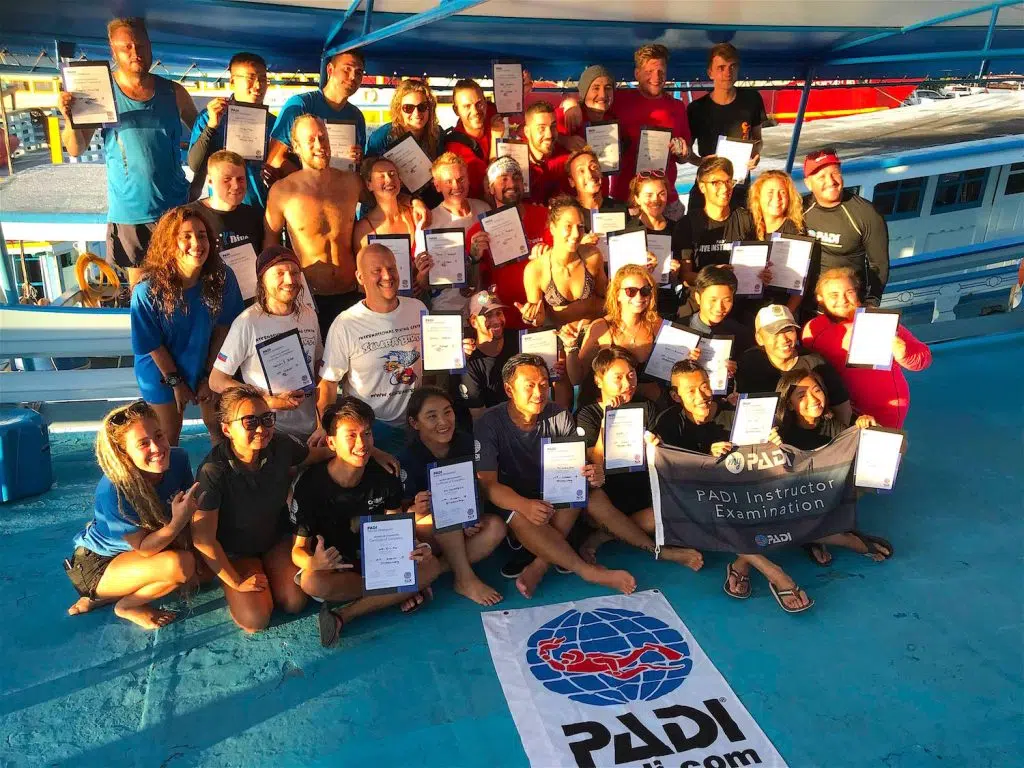Teaching student divers with an experienced scuba diving instructor
One of the most common questions I’m asked by IDC candidates, often in the counselling sessions I conduct at the end of the IDC is ‘do you think I should do a team teaching Internship after the IDC?’
My reply is, if you have the time why not? This tempts the next question:
‘Why do you think a team teaching internship will be beneficial for me?’
That’s normally when I suggest a coffee, or depending on the time of day, maybe a beer.
There’s never a short answer to this question and often my reply will depend on a number of variables including the individual ability of the candidate, general diving experience, confidence, background & circumstances.
But my overarching reply is if you have the time, then do it.
Here are some of my reasons why.
1. Gain invaluable tips on how to overcome the learning difficulties & problems that your student divers experience (from more experienced Instructors)
During your IDC we role play. This involves Instructor candidates being assigned typical problems that occur during skill development. Playing the role of the Instructor involves correctly identifying and responding to the problem.
An example of this may be a mask skill where the assigned problem is blowing through the mouth not the nose and the correct response is to tap your nose or the nose area of the student’s mask.
In normal life, above the surface, the student may only breath in and out of their mouth. So trying to change a habit of a lifetime, and have them breathe through their nose just by tapping the nose pocket of their mask, may not be enough.
In my experience helping a student diver overcome this tendency would often involve a little more time. Ask the diver to practice breathing in through their mouth, and out through their nose on the surface.
Once they became comfortable with this repeat it, this time under water with the mask on – but no water in the mask. When you can see the mask seal moving slightly you know they are getting the hang of it. Then we can add some water and do again whilst placing some pressure on the top frame of the mask.
Realistically this can take anything from several minutes to several confined sessions!
2. Experience a variety of different teaching styles
I always say on the IDC, master the structure of how to deliver a teaching presentation first. Once you have the basics, you then add your own personality, experiences, perspective and unique delivery style.
Naturally, this takes time, as we develop as educators. Having the advantage of team teaching alongside multiple, experienced Instructors, each with their own teaching style allows you to absorb the best aspects of their teaching into your own.
More experienced Instructors often have the ability to simplify certain aspects of knowledge & skills development in areas that student divers may struggle with, in ways new Instructors wouldn’t necessarily think of immediately.
After all they have more experience. They have dealt more often with learning difficulties and over time have honed their techniques accordingly.
What isn’t there to like about tapping into such a wealth of experience?
3. Learn how to schedule and manage groups in a timely and efficient manner
Something that is often overlooked by a new instructor, is logistics, scheduling and managing student divers.
Time management is crucial! You must ensure there is time set aside for breaks, additional practice and remediation. If you are fortunate enough to have a certified assistant, you will need spend time organizing and explaining their role.
For an experienced instructor this will come naturally. It is important to see how they manage a course, and everything that comes along with it.
Plan for the unexpected
Something an experienced Instructor will always tell you is that problems tend to happen when you least expect them.
Remember your students will have busy schedules, whether completing the course part time over several weeks or over 3-4 days in a resort environment like Koh Tao.
They expect to complete the course within the timeframe you scheduled during the course orientation and although there are many acceptable factors out of our control that could cause a delay, inefficient time management and poor organization on your part isn’t one of them.
4. Pick up cool tips to help you with the continuing education process
As a new instructor, you have a lot to think about while planning and executing your courses. It’s so easy to get caught up in the ‘important stuff.’
You need to focus on: standards, logistics, time management, problem solving…oh and did we mention, keeping everyone happy at the same time. Yep, remember smiles on faces is extremely important!
This includes, not only your students, but you as well. Oh…and probably a good idea for your boss as well.
Continuing education is the lifeblood of any successful dive operation and the one you work at is no different.
Fine tuning the art of promoting further PADI courses and dive activities to your students is a win-win situation, which literally allows you to do the impossible and keep everyone happy.
Your students get to participate in more scuba adventures with you, and your boss is able to pay the bills and reward you with more courses, once you’re free to start teaching a new group of students again!
5. Watch how experienced Instructors interpret and apply PADI standards
One example of how an experienced PADI instructor may apply a standard to maximize efficiency and the students learning curve could be the neutral buoyancy skill on Open water diver #2 of the Open water course.
To remind you the performance requirements is to ‘become neutrally buoyant by adjusting air in the BCD (or dry suit) with the low pressure inflator’
In confined water during dive 2 we use a fin pivot, which is a great way to introduce buoyancy to student divers. The skill demonstrates how we use lung volume to fine tune buoyancy. As the performance requirement states:
Gently rise and fall in a controlled manner, during inhalation and exhalation.
Its practical, and more importantly, in confined water it has no negative effect on the environment.
However, during an open water dive is this really practical? I would argue it’s not. We shouldn’t need to ask student divers to sit in the sand and perform a fin pivot when we can ask them to do this during our descent.
This is much more realistic, encouraging divers to adjust their buoyancy as they descend, beginning their dive from the get go.
And while they are at it they can complete the remaining Dive 2 skills neutrally buoyant too.
There are many other examples of how new Instructors can pick up useful tips on interpreting and applying standards via a team teaching internship. Spend more time around experienced Instructors and you’ll pick up more.
6. Understanding and managing different learning speeds (and abilities) within one group
All students can learn. But not all students learn at the same pace.
Managing multiple students, all with different learning abilities, strengths and weaknesses, AND keeping everyone happy is an art in itself. And one that certainly takes time and experience to master.
Having the opportunity to work closely, alongside an Instructor with significant teaching experience, often with hundreds, if not thousands of student certifications to their name is invaluable, giving you unique insights into mastering the art of teaching.
Managing assistants, keeping the fast learners in the group occupied whilst encouraging those with learning difficulties to continue on and master the skills they are having difficulties with, is no easy feat and one that often boils down to experience.
Get a head start on this and discover the art of teaching scuba diving.
7. Practice what you preach to your students by continuing your education and becoming an MSDT
Continuing your own education and at the same time your personal development is just as important for you as it is for your students. It shows you understand that there is still a lot to learn as an instructor, it demonstrates you are serious about your career in the dive industry and allows development to continue at an appropriate pace.
This type of commitment allows you to stand out to prospective employers in a highly competitive marketplace and shows you possess the right attitude to succeed.
8. Integrating social media activities within the teaching process
Having the time to embrace the phenomenon of social media and integrating it alongside your teaching activities can be a challenge for any new Instructor, especially when doing this at the same time as the other 7 points above!
Social media is a part of our lives, whether we like it or not, and its not going away!
You probably came across this blog either directly, or indirectly via social media. And you will have no doubt researched me and the dive centre by looking through my social media platforms and profiles.
This is an important part of the buyer journey you have completed, and I have facilitated this by being active online myself.
Your own potential students are going to want to research scuba diving in a similar manner. Do you want them to find you in the same way you have found me?
Another great reason for you to complete a team teaching Internship is so that you can benefit from partnering up with more experienced dive professionals who utilize social media as a marketing tool. You can witness first hand the relationship building process with student divers and learn how important it is to connect with students.
To be successful in this industry means you must embrace new technologies. And let’s be honest, managing a social media account on one or two platforms is a relatively straightforward skill set to learn and develop.
The underwater environment and the adventurous sport of scuba diving provides us with an incredibly beautiful workplace and you’re never going to be short of content to showcase what you do to potential customers.
Becoming an Instructor is a great achievement. It takes time, dedication and hard work to build up the necessary pre-requisite qualifications and diving experience to enrol on an IDC. The PADI IDC is the most comprehensive Instructor level training program in the industry and is great preparation for your future career.
In the end, it all comes down to one thing – being prepared! The real journey begins the day you receive your teaching status and conduct your first course. Having the benefit of team teaching alongside someone with considerably more experience offers invaluable benefits to any aspiring dive instructor.




